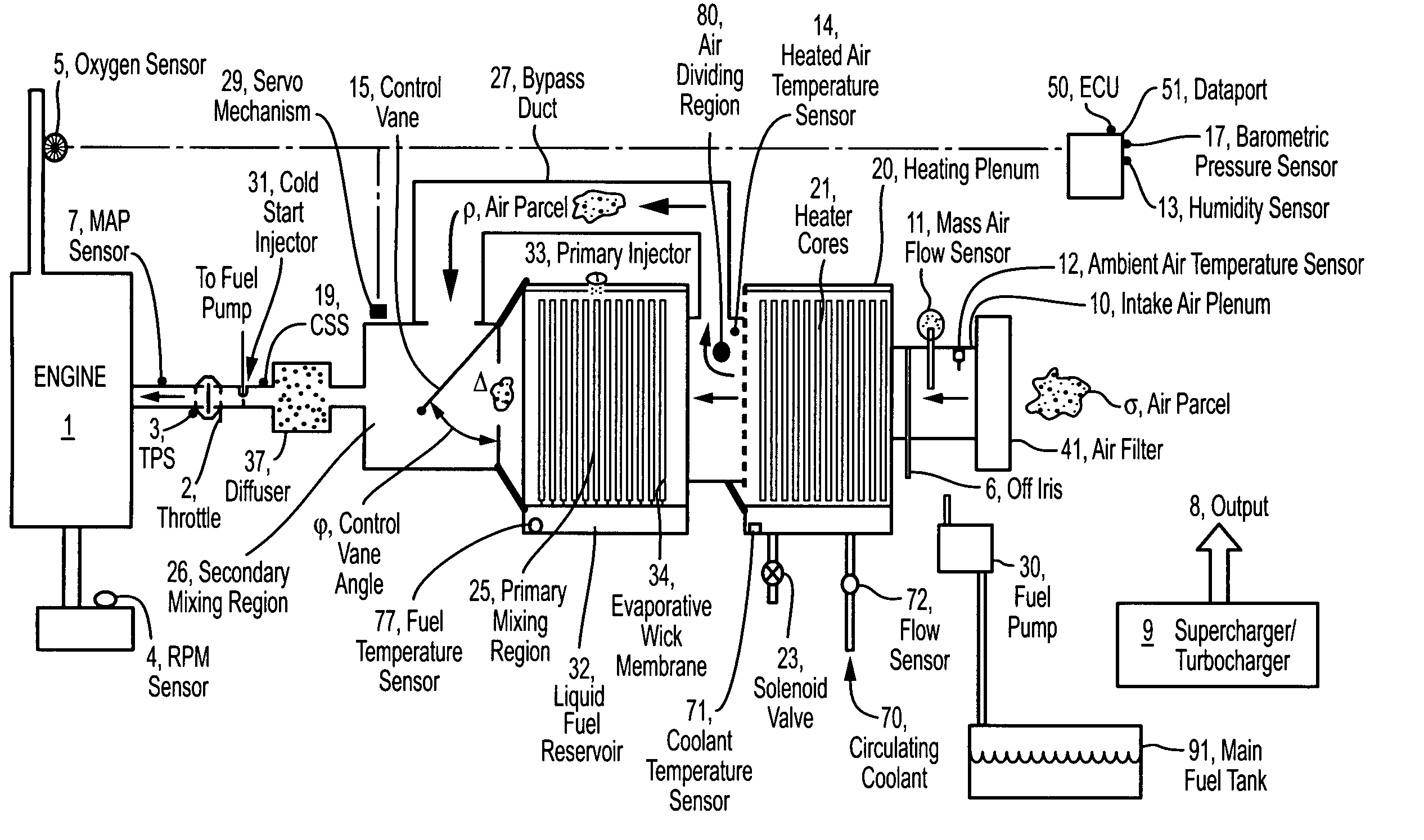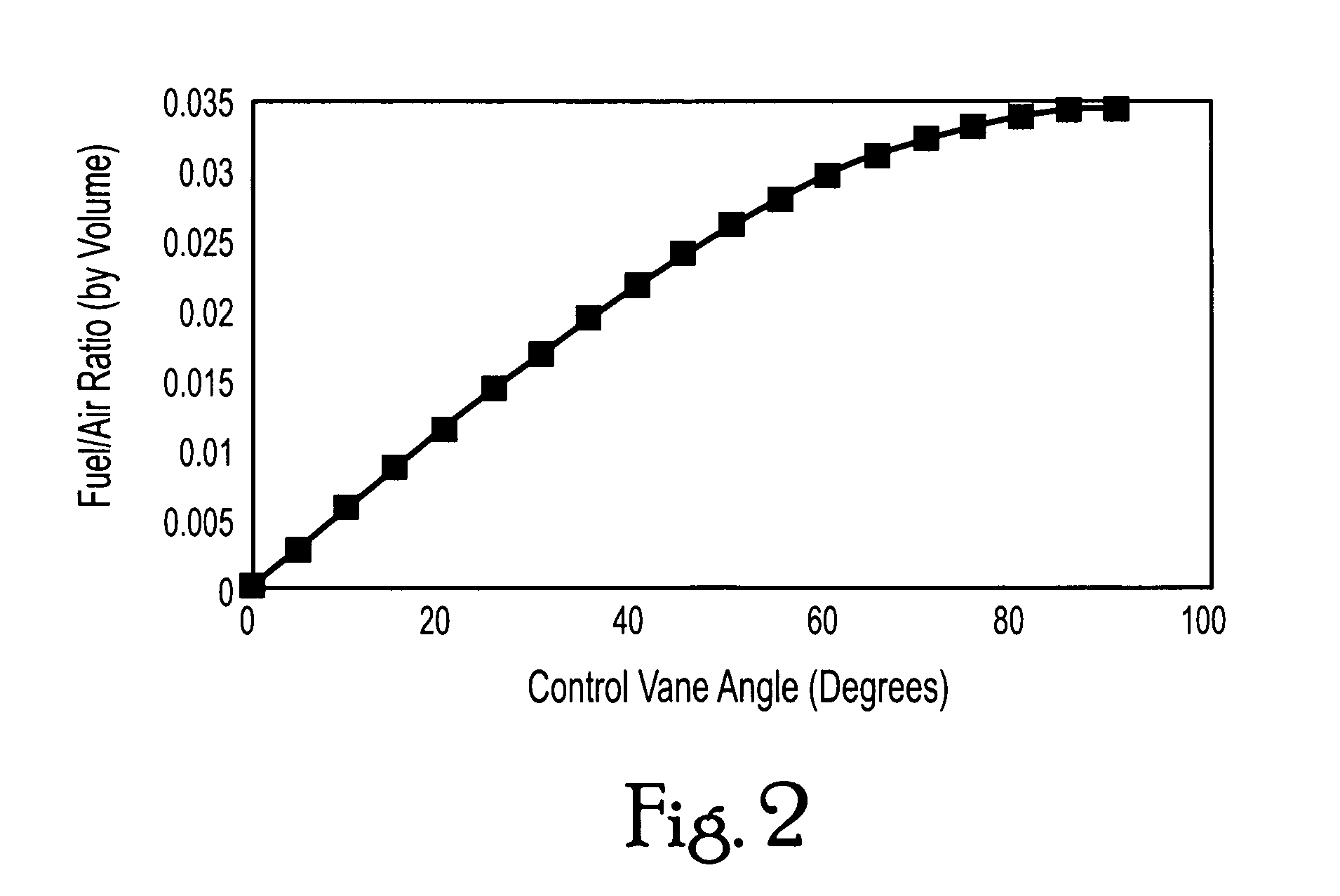Fuel delivery system
a fuel delivery system and fuel technology, applied in the direction of machines/engines, combustion air/fuel air treatment, electric control, etc., can solve the problems of inefficient combustion, waste of fuel, unnecessary pollution, etc., and achieve the effect of maximum fuel economy and emissions performan
- Summary
- Abstract
- Description
- Claims
- Application Information
AI Technical Summary
Benefits of technology
Problems solved by technology
Method used
Image
Examples
Embodiment Construction
[0036]When used with a supercharger (9), the invention comprises the use of an intake air plenum (10) which receives combustion air from the output airstream (8) of a supercharger, or turbo-charger. When used without a supercharger or turbo-charger, the invention comprises the use of an intake air plenum (10) which draws fresh combustion air (air parcel sigma.) from the atmosphere into the invention for processing. In either case, intake air plenum (10) receives, transmits and defines, an airstream. Since it is desired that the total quantity of air to be combusted is measured, intake air plenum (10) also supports the emplacement of an mass air flow sensor (11). It is also desired that the temperature and humidity of the incoming combustion air be measured. Thus intake air plenum (10) also supports an ambient air temperature sensor (12) and a humidity sensor (13). These sensors communicate the results of their readings concerning the characteristics of the intake airstream (represen...
PUM
 Login to View More
Login to View More Abstract
Description
Claims
Application Information
 Login to View More
Login to View More - R&D
- Intellectual Property
- Life Sciences
- Materials
- Tech Scout
- Unparalleled Data Quality
- Higher Quality Content
- 60% Fewer Hallucinations
Browse by: Latest US Patents, China's latest patents, Technical Efficacy Thesaurus, Application Domain, Technology Topic, Popular Technical Reports.
© 2025 PatSnap. All rights reserved.Legal|Privacy policy|Modern Slavery Act Transparency Statement|Sitemap|About US| Contact US: help@patsnap.com



